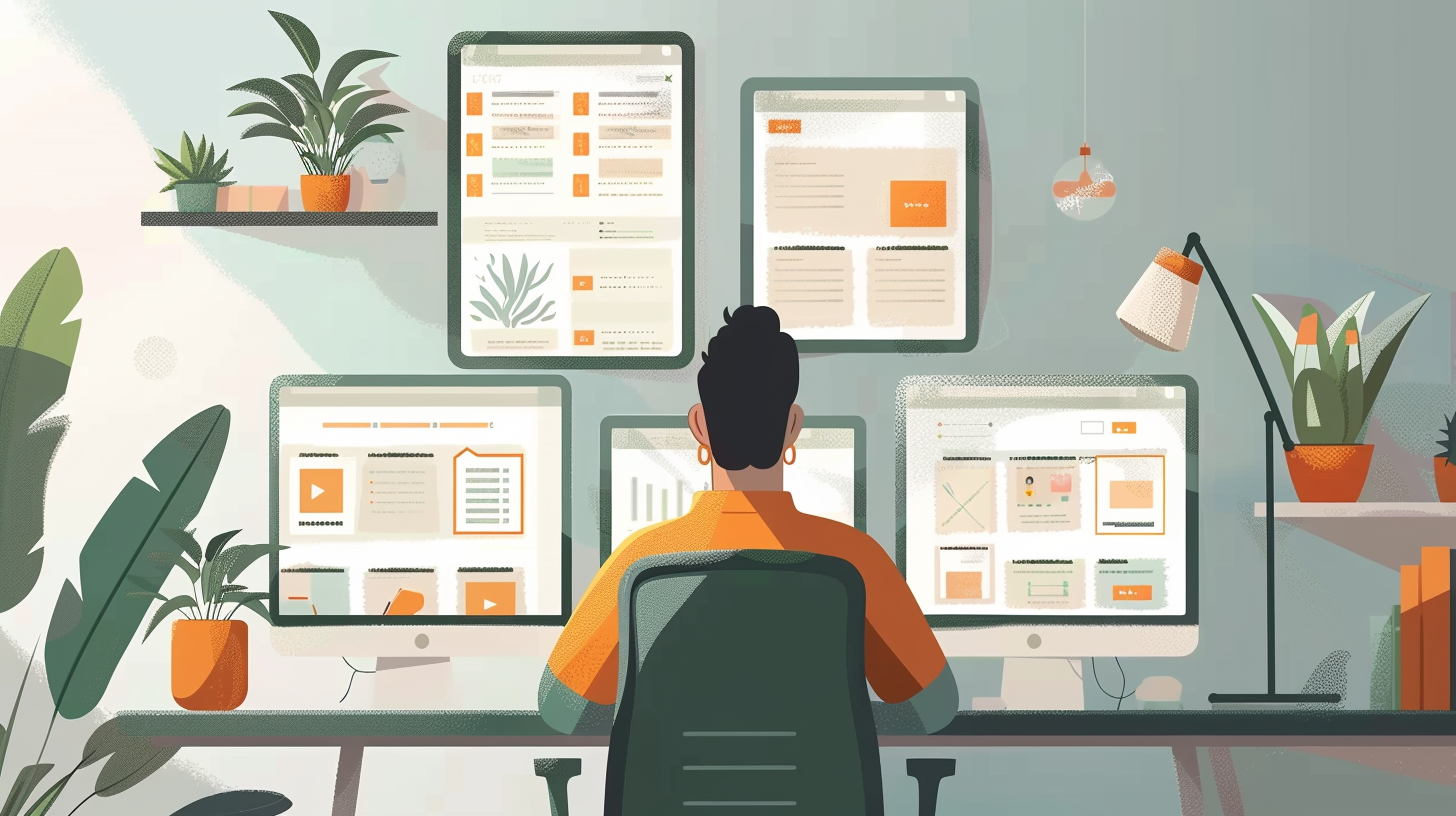
You've been staring at your portfolio for weeks. Something feels off, but you can't put your finger on it. Applications aren't converting. Interviews aren't happening. But is the problem really your portfolio, or are you just overthinking it?
Here's the thing: most designers can't objectively evaluate their own work's effectiveness. This recognition framework will help you identify when professional review stops being optional and becomes essential.
The 0.7 Problem
The Reality
Most portfolios fail the initial screening because they don't meet the basic standards hiring managers use to filter candidates. The "good enough" portfolio rarely is.
The Reality: Application Tracking Shows the Problem
Most designers track their applications but miss the pattern. A response rate under 5% isn't "tough market" - it's your portfolio. The Figma Community showcases portfolios that actually get hired.
- • Weak portfolios: Low response rates
- • Strong portfolios: Consistent callbacks
- • Same skills, same market, better presentation
What the 0.7 Score Means
- •0.9-1.0: Portfolio that consistently gets interviews
- •0.7-0.8: Meets hiring manager minimum standards
- •0.5-0.6: Has potential but needs significant work
- •Below 0.5: Likely to hurt application chances
Why Most Portfolios Fail
- •Story structure that doesn't match hiring evaluation
- •Missing industry-standard portfolio elements
- •Unclear value proposition and specialization
- •Technical presentation that creates friction

The Hidden Cost
Designers with weak portfolios spend significantly more time job searching and need to apply to far more positions to get the same results as those with professional-grade portfolios. Check current design trends to see what's working.
Recognition Framework
These four categories of signals indicate when your portfolio has moved from "could be better" to "actively hurting your chances" - the point where professional review becomes essential. Learn more about portfolio improvement strategies in our other resources.
Application Performance
Your portfolio isn't passing the initial screening
Warning Signs:
- Response rate under 5% (industry average is 2-10%)
- No callbacks after 20+ applications
- Rejections without feedback or interviews
- Applications ignored by companies you're qualified for
Time Investment
You're stuck in analysis paralysis or inefficient optimization
Warning Signs:
- Spending 3+ hours per application with no results
- Constantly tweaking portfolio without clear direction
- Researching for weeks but not applying anywhere
- Postponing applications "until portfolio is perfect"
Feedback Patterns
Your story and presentation need professional clarity
Warning Signs:
- Generic rejections with no specific feedback
- Interviewers can't understand your role in projects
- Questions about basic portfolio elements during calls
- Confusion about your specialization or skill level
Self-Doubt Indicators
You need external validation to break the confidence cycle
Warning Signs:
- Constantly comparing your work to others online
- Imposter syndrome preventing you from applying
- Unable to articulate what makes your work good
- Feeling like you need "just one more project" forever
Why We Miss the Signs
Even when the evidence is clear, psychological barriers prevent us from recognizing when we need help. Understanding these barriers is the first step to overcoming them.
The Dunning-Kruger Effect
The Problem
We can't accurately assess our own work because we lack the expertise to see what we don't know.
Professional Solution
Professional reviewers have pattern recognition from seeing thousands of portfolios.
Real Example
You think your case study is thorough, but you're missing industry-standard sections that hiring managers expect.
Sunk Cost Fallacy
The Problem
We resist changing work we've already invested significant time in, even when it's not working.
Professional Solution
External perspective can identify what to keep, what to fix, and what to scrap entirely.
Real Example
That project you spent 3 months perfecting might actually be hurting your chances.
Confirmation Bias
The Problem
We seek feedback that confirms what we want to hear and dismiss criticism that challenges our assumptions.
Professional Solution
Professional critique is objective and focused on hiring outcomes, not protecting feelings.
Real Example
Friends say your portfolio looks great, but hiring managers have different evaluation criteria.
Analysis Paralysis
The Problem
Too many options and opinions create decision paralysis, leading to endless tweaking without progress.
Professional Solution
Structured professional review provides clear, prioritized action items.
Real Example
You know something's wrong but can't decide whether to redesign projects or improve case studies first.
When to Get Help
Timing matters. Different scenarios require different approaches to professional review. Identify your situation and get the right type of help at the right time.
Emergency Mode
Get help immediately
Active Job Search
Get help within 1 week
Strategic Improvement
Get help within 1 month
Preventive Maintenance
Get help quarterly
Self-Assessment Checklist
Answer these questions honestly to get a clear picture of where you stand. The more "yes" answers, the more urgently you need professional review.

Portfolio Health Check
Quick assessment to identify professional review needs
What to Do Next
Recognizing the problem is the first step. Here's how to take action based on your assessment results.
Emergency Mode (6-8 signals)
Your portfolio needs immediate professional attention.
- • Stop applying until portfolio is fixed
- • Get professional review within 48 hours
- • Focus on quick wins first
- • Consider portfolio service with rapid turnaround
Strategic Fix (3-5 signals)
Address issues before they become critical.
- • Get professional review within 1 week
- • Continue targeted applications
- • Implement improvements systematically
- • Track performance metrics
Preventive Care (0-2 signals)
Maintain portfolio health proactively.
- • Monitor application performance
- • Get periodic professional reviews
- • Stay current with industry trends
- • Build long-term career reputation